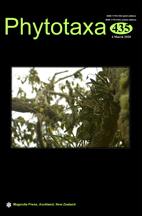Abstract
One of the most common processes shaping evolution in plants could be the introgression or hybridization between species. We sampled a putative hybrid population of Carex × boenninghausiana recently discovered from Sicily (Italy), and one specimen of each of the parent species of this hybrid (C. paniculata and C. remota) from the same area. We performed phylogenetic analyses of nuclear and plastid DNA markers after sequencing and cloning in the case of the nuclear region, as an easy and effective way of hybrid detection. Previous morphological and cytogenetic studies demonstrated the hybrid character of C. × boenninghausiana. Our results show how C. paniculata and C. remota are the parent species of this hybrid, also from a molecular DNA point of view. The use of cloning of the ITS nrDNA region to separate chains from both parents, combined with the analysis of cpDNA regions seems to be a powerful tool to detect hybridization and clarify the evolution and species’s relationships in natural populations in Carex.

